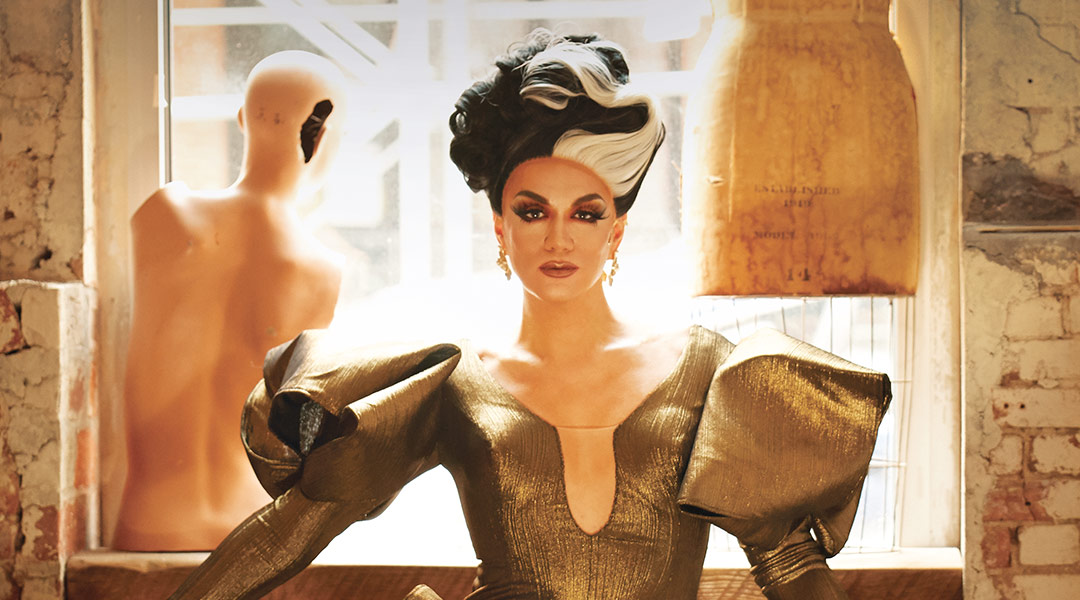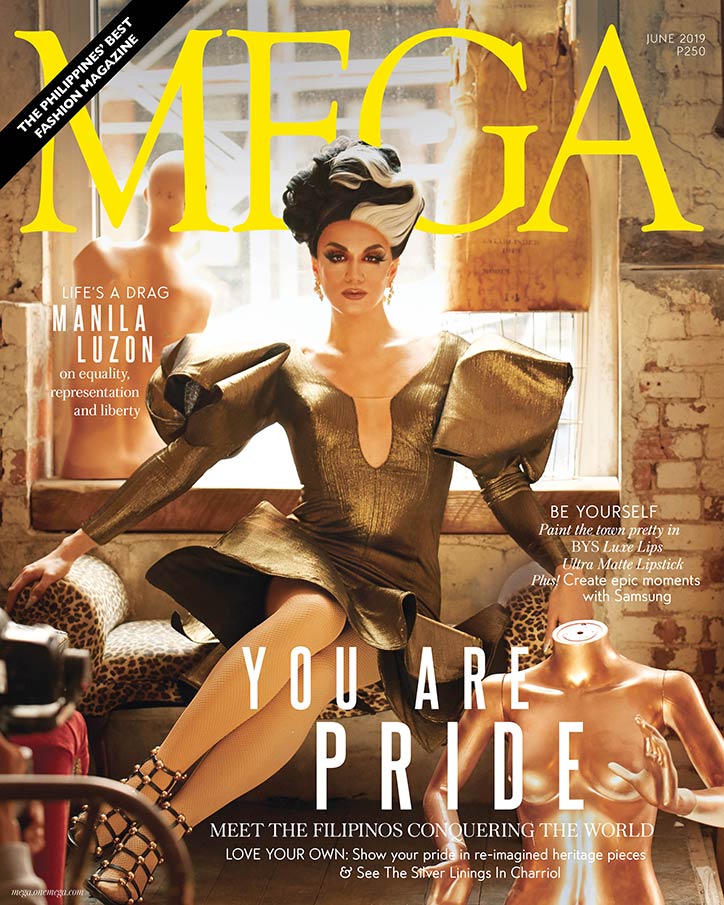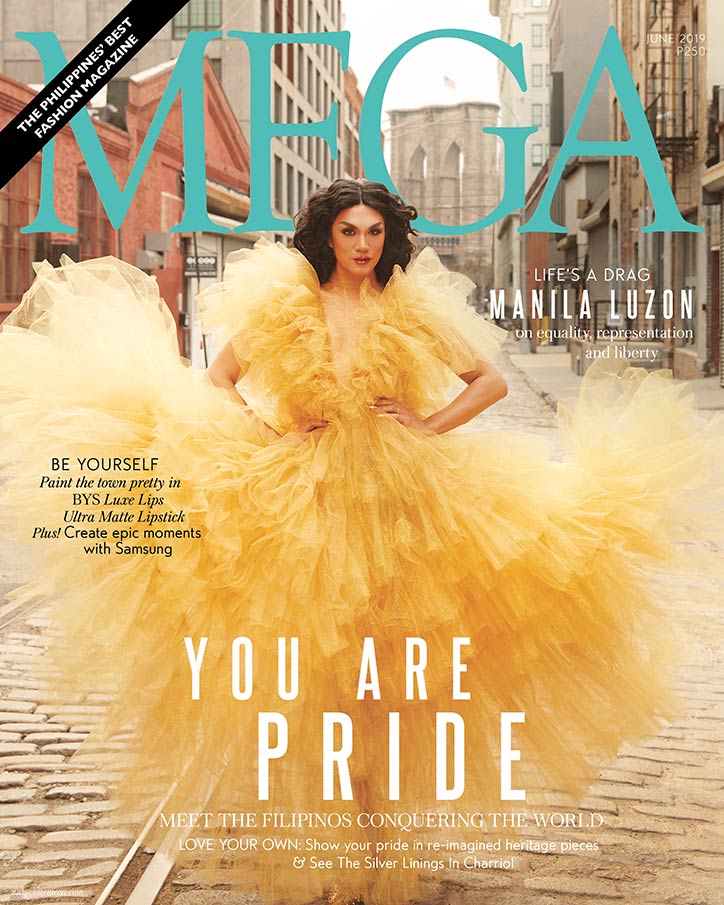Exploring her Filipino heritage and roots as a drag performer and global personality, Manila Luzon takes us on a fantasy-filled day in Brooklyn, New York where we get to know the man behind the persona, the woman that she gets to be, and the human being that connects the two to one beautiful soul.
Related: Notes On Camp: How The Met Gala Brought The Fun Back To Fashion
There isn’t a more familiar sound to anyone who grew up in any semblance of a Filipino household, no matter how diluted by choice and circumstance, than the full-throated bellow of a mother’s threatening voice. The rapid succession of words firing off in a single physicalized huff of breath, complete with hands either frantically gesticulating mid-air or propped on the side of the hip is enough to set any stubborn pain-in-the-ass to straighten their spine in saintly obedience. No hay-Diyos-ko-itong-batang-ito-talaga-oo was (and still is) spared, even a very young, pre-Bagets breakout matinee idol in the making, William Martinez in the dark and gritty visual essay of dictatorial protest, Manila By Night.
In the 1980 seminal classic cast in the permanence of celluloid by Ishmael Bernal, the visceral exposition explores the intimacies and connections that command the arteries of the Manila underbelly, a rotting excuse of a city ensconced in neon lights, ironic architectural infrastructures, and the trappings of the nouveaux rich. Even before the day could enjoy its relenting to the grip of the night, the film’s opening chorus of a hum of the 80s-style sedans whirring, what sounds to be a dog-like whimper, and the mindless drawl and mumble of the adolescent motley crew of Martinez’s turn as Alex is rudely punctured by the shrill of Virgie, his incandescent mother clad in a vivid blue caftan, given so much matriarchal pomp by the incomparable Charito Solis.
While his childhood was arguably worlds away from Alex in what would later be renamed City After Dark (a no-choice conceding of the film’s producers to Imelda Marcos, then First Lady and Governor of Manila, who thought the original title spoke ill of the city), his formative years were filled with the very same nagging, panic, and odd manifestations of love by his grandmother and mother. “Listen, the funny story is that my Lolo is from Cebu, so he speaks Cebuano, and my Lola’s from…We call her Lolita, because she thought Lola was too old, and she spoke Tagalog, and she’s from Manila. So, they were too stubborn to learn each other’s dialects in the house so they spoke English. So, my mother’s family grew up speaking English as the first language, never really learning either Tagalog or Cebuano,” recalls Karl Westerberg, explaining, almost apologetically why he cannot speak Filipino.
This inability to speak the language of a country he traces part of his origins to doesn’t make him any less Filipino though. In fact, just as any Filipino-American growing up in the liberties of the United States would know, the rich heritage and colorful culture is very much ingrained in them, whether it be through a dialect, a dance, or for the rest of the world to understand, delicious food.
The Genesis

“Growing up in the United States, there was a very small community of Filipinos that live in Minnesota, and they grouped together and formed the Cultural Society of Filipino-Americans. We would gather every week and the Filipino families would eat together and we would put on a show. We would learn all the Filipino traditional dances, so as a child, I learned Tinikling. You know, you got the bamboos out, and we were like, trying not to get our feet smashed,” he fondly remembers. “Every few years we would put on a show called Pamana, which was to celebrate Filipino heritage, to keep it alive, to teach the children. And we would do everything from you know, the rural dances, the Maria Clara dances, the Singkil. Yeah, I actually danced the Singkil when I was a…I wasn’t the little princess. I wasn’t even the lady that held the umbrella. I was the prince. So, I had the sword I was swinging around,” he continues. “But now, I am the princess. F*** the princess. I am the queen.”
This isn’t an entirely new narrative, especially one that is collectively shared by many a generational Filipino-American, but with charm and candor thrown in the mix, naturally, the room erupts in a riot of laughter on the account of Karl, who has now fully taken on the persona of the famed, legendary, and double all-star drag persona, Manila Luzon. With a firm grip on the attention of the spectrum of human beings all crammed at the edges of the properly lit set where she now sat cushioned on a plush velvet armchair, she turns just a touch serious, expounding more on her Filipino roots. “I love being a Filipino. I grew up in Minnesota, which is predominantly white, so I was always different. I always felt different,” she reveals. “When my father was walking around with his two Filipino children, people would come and give me little looks and stuff. So, I always knew that I was of two different cultures, and it was great to grow up knowing that there was a Filipino side of me, and then the American side, and it was great because it gave me a bigger like, grasp of the world. I definitely had the best of both worlds. And you know, the best of Filipino food.”
No conversation hinged on being Filipino is ever complete without at least a mere mention of food, as we are a race that not only loves to eat, but feast. And Manila Luzon is no exception who rattles off a menu of Filipino delicacies that have on many occasions been served on their dinner table growing up. Without surprise, she lets out a guttural, almost orgasmic rumble when she punctuates the list with the adobo. “I make a mean chicken adobo, okay,” she says, eyebrows arched for emphasis with one arm perched on the hip and the other lifted mid-air wagging her beautifully decorated finger. “Actually to be honest, my mom was never really a cook. She was intellectual. She loved to study, so she stayed out of the kitchen. Although everyone else in my family is really a good cook,” she ascertains. “But my mother does make a really, really amazing chicken adobo. She told me the recipe, and when I became an adult and moved out of the house, I would call my mother every time I want to make a chicken adobo, and ask her, ‘Mom, what’s the recipe for chicken adobo?’ Even though I knew the recipe, I would just use that as an excuse to call my mom.”
This special bond with his mother, one that perhaps we all in different capacities share with our own, has not only held up who Karl Westerberg is today as an all too important pillar for his life, but is also part and parcel responsible for the genesis of Manila Luzon.
Making It Matter
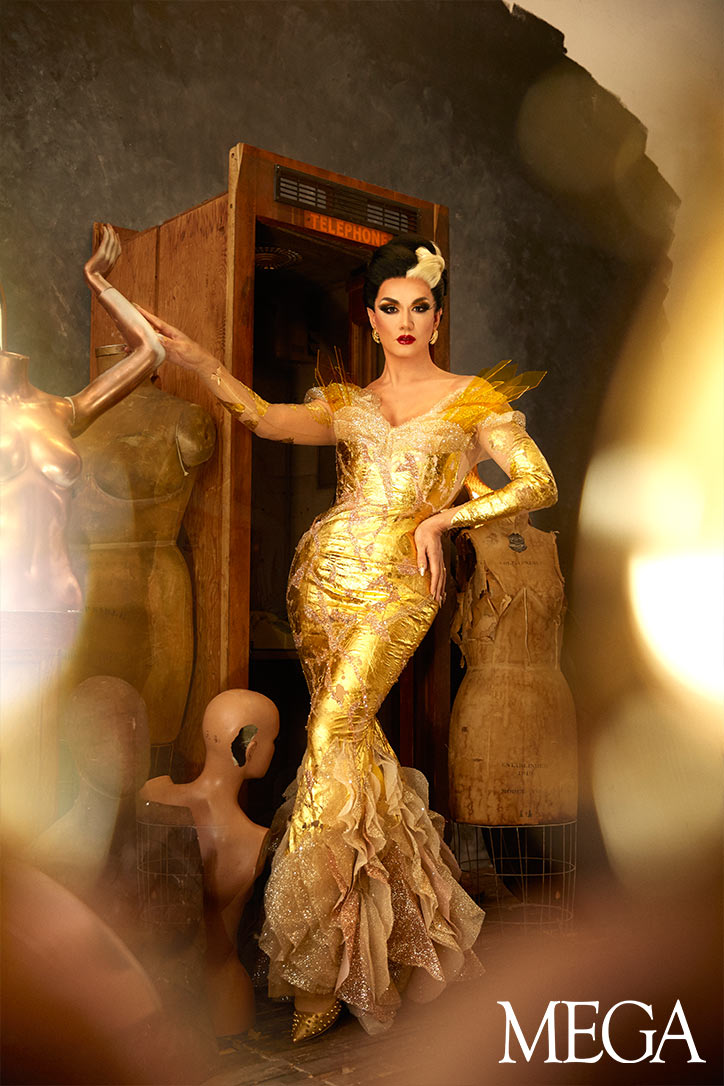
“When I first started doing drag, I knew that I wanted to celebrate my Asian heritage. So, I would always be out in a kimono or like, you know, mandarin orange dresses, Filipino dresses,” she says. “My mother has a lot of costumes from the Filipino folk dances that we would do. So, she would keep them all, and there was a time when I was the exact same size as my mother—I was a little bit taller than she was, so everything was a little bit short on me—but you know, I didn’t have any money. That was how I started.”
Even early on, representation was very important for Manila, something she was cautious, careful, and conscious about when developing the character for the stage. A challenge that still sees ripples and a crashing of waves against the firm rocks of privilege and supremacy, it was paramount for her to personify someone that not only a lot could relate to, but someone living in the margins would identify with.
“There isn’t enough Asian representation in the media. Never did I turn the television on and see a person that I might go, ‘Oh yeah, that’s me,’” she says. “So, it’s really great that there’s more and more diversity that’s happening within the media, especially here in America. And what’s really great, what I am really proud of, is that I’m not going on this television show, playing a character that was written for me. I get to go on this television show and be myself. So, that’s really cool because there are gonna be people that tune into RuPaul’s Drag Race and see this gay Asian man being himself, and they can identify with that, they can love that and they can feel like they are represented, and not just by some character that some white guy wrote.”
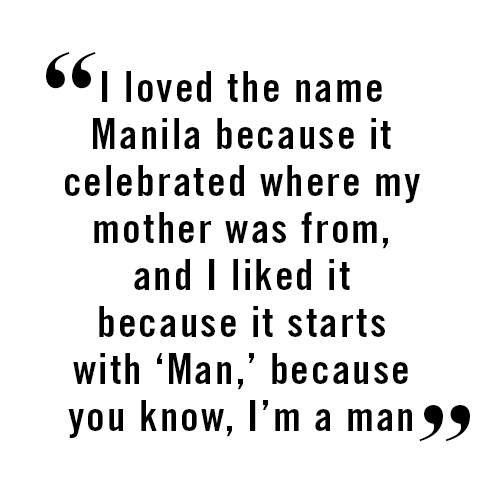
When she started to hit the ground running as a hustling queen then, she would always be labeled the Asian beauty, which she very well stood by, in her heels, no less, making a distinct and unique impression very early on. “I used that to separate myself from the other white girls,” she asserts. “When I was choosing a drag name, I wanted to celebrate my Filipino heritage, and it was Manila, it was my first name ever.” While it was natural, almost pre-destined for her to assume this character, the origin of the Manila Luzon we know now has an even more interesting depth to it than we had assumed. “I loved the name Manila because it celebrated where my mother was from, and I liked it because it starts with ‘Man,’ because you know, I’m a man, and it also has the same number of syllables as Madonna. And since I named myself after a city, I thought: “It’s already a geographic location, I’ll just name my last name the island that Manila is on. So, I chose Luzon.’’
From then on, the journey would progress with struggle, change, and of course, victories. But despite the steady rise to regional, national, and later on, global acclaim, Manila always stayed true to herself and her origins, which speaks volumes of her, really. “I am really happy to be a part of this, and tell the world how proud I am to be a Filipino, and also to celebrate diversity, because I am famous worldwide, everyone knows me from Drag Race. So, I feel like it’s a great opportunity for me to be an ambassador of the Filipinos. I am very proud to do it. I am a proud gay man, and I came from an amazing gay community, and I know that there are a lot of people from the Philippines that don’t quite understand it or accept it yet, so I want to show them that we are proud of who we are, and we are freakin’ fabulous and gorgeous.”
The Battle of Manila
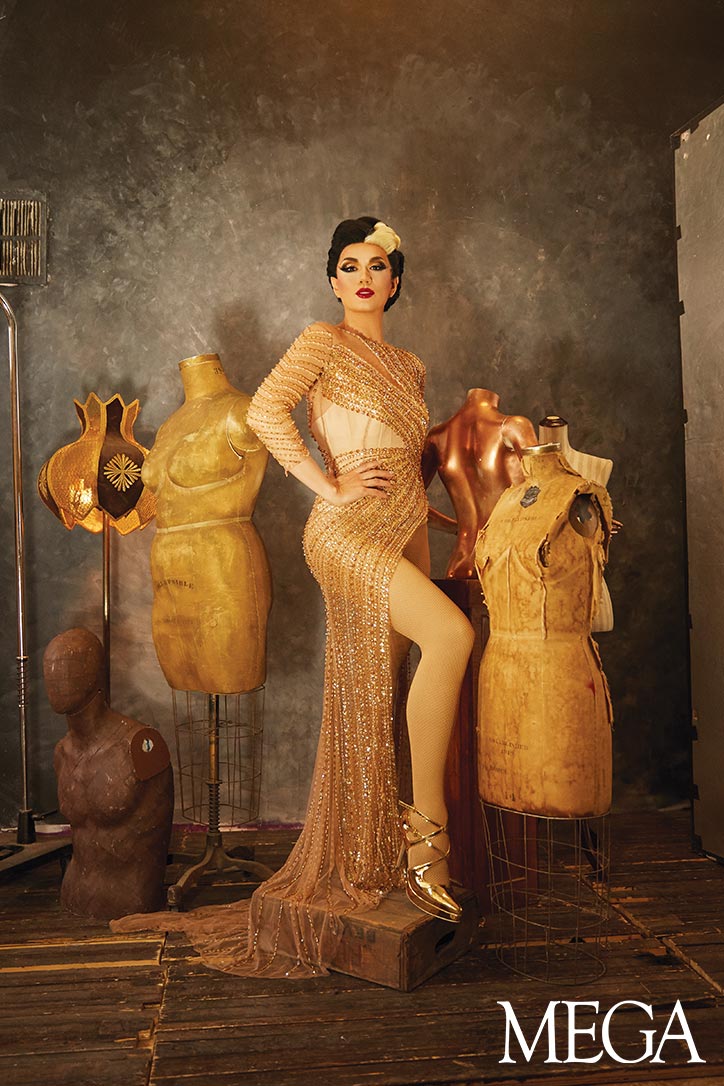
The freedom that Manila Luzon enjoys in the greater part of the world she lives in, or even the places she visits and tours at, isn’t remiss on her. If anything, she is more mindful of these, especially with the role and responsibility heaved on her shoulders as part of the grander platform she is propped up on now.
“Here in America, we have come so far in the last few decades, I think it is amazing because, you know, it’s just important to know who you are, accept who you are, know your flaws, use your flaws, strengths,” she trails off. “Well, equality is a big thing for me, because I just get married about a year ago to my husband, and marriage equality is something that I wasn’t expecting to happen for me, or for anybody. I think it is important because I grew up in a family…like, all my family, my mother and father are still together, my grandparents, they were married for many, many years, and growing up, I knew that is something that I wanted. I wanted to have someone to share my life with, and go on a journey and have someone to share it with. And it is crazy that people don’t want that to happen for a certain group of people. So, the fact that we have marriage equality here in America is important, and I’m really excited to showcase to the world that might not accept it just yet, that this is normal, and this is okay, and this is something that should be celebrated. Love is love. And I am proud to be who I am, to show people that you can love whoever you want, and you know, that there’s nothing standing in our way.”
For all the strides, leaps, and bounds that our generation gets to enjoy today, being the human beings we rightfully and truly deserve to be, Manila Luzon is quick to remind us of the struggle it took to get to this point where we are today, despite it being far off from where we should be. “You know, I feel like what happened is people really got complacent. They kind of started to feel like, ‘Oh, things are good, I’m comfortable, I don’t need to fight for things, like, I’m just gonna keep myself quiet, and everything is just gonna stay the same,’” she expresses. “I think that now, the political climate is changing, it’s getting a little darker and stormier. Now, I feel like people are starting to realize that the fight has to be fought longer. It’s not done. We’re not done fighting. I think it is important that we all learn who we are, know who we are, and just kind of accept that, and learn to respect other people, tolerate other people. And in this kind of environment, where you know people are trying to hold other people down because they want to either push people down to feel like they are higher. I mean that’s unacceptable, and I feel like we are getting a nice push back to that. So, the more people who want to push other people down, the more we are going to resist them and fight.”
The conviction for Manila Luzon is natural and heartfelt, not only because she wraps herself within what is ideally the confines of a safe community replete of judgment, bias, and indifference, but moreso because the very art form that she practices, taking it to many nooks and crannies of the world, is rooted in resistance and dare we say, revolution.
“Drag is always gonna try to push limits. It’s just so weird to have a man, dressing up as a woman, and you know, we like to push boundaries, like to make people question,” she articulates. “And because of RuPaul’s Drag Race and RuPaul, I now have been introduced to a whole audience around the world and within the context of the show, I get to do what I get to do. And because of that fan base that I gained, they get to listen to me outside of what RuPaul’s Drag Race has to offer. In my real life, I have way more to say, and it’s amazing that I have this audience that come from this TV show, that now follows me and is interested to what I have to say more than you know, what I have to wear.”
That isn’t to say that the legions of Fanilas aren’t waiting with bated breath as to what coo-coo couture looks she will turn out at her next show or Drag Con. But this job, this art has become a way of life for her, tossing out any shred of normalcy out the window. Not that Manila Luzon can be boxed as normal, because clearly, she is far from it—and we mean that as a compliment of the highest order.
“Drag is exhausting. It consumes my life. I think about drag all of the time. It’s like one of those things where I can’t clock out at the end of the day, and then just go return to my normal life. Now, drag is my career, and because I was on RuPaul’s Drag Race, I have fans all over the world. And I get to travel around the world and perform for them…And that is amazing. It really motivates me to keep doing what I do at the best that I can.”
Manila, Forever
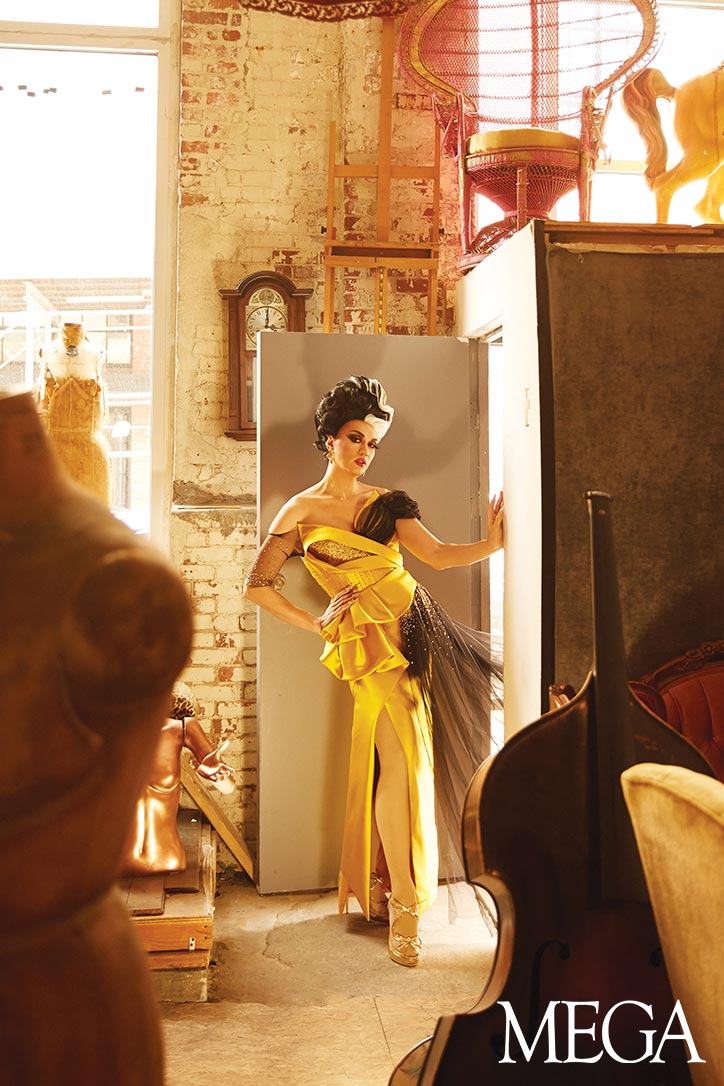
For all the glitter and glamour, the feathers and fantasy, the pomp and personality of drag, it is in its very essence a funnel of self-discovery, as it as a stage for self-expression. Even for someone as legendary as Manila Luzon has become to her followers and fans, especially in the country, drag has served as an exercise of coming into her own.
“I just love the fact that we can just take the things around us and pretty ourselves up, you know? Paint our faces so we can look beautiful. I mean, it wasn’t until i first put myself in makeup, when I went to my mother’s makeup drawer, got her little palettes out, and started painting myself up, that I looked into the mirror and I saw beautiful person looking back at me,” she muses. “It was a big deal for me, because I haven’t really felt pretty before. And then I realized, when I have done it several times, after I washed my face off, and I returned to my normal self, I still felt beautiful. So, drag really helped me accept who I am as a person, and loved who I am.”
This is also why, being a figure that people look up to, especially young boys and girls, Manila Luzon is nothing but encouraging of the freedom for human beings to just be—whoever and whatever it may be. “I love it when I see little boys and girls who are dabbling in drag, I love that. It’s so cool. It’s something that I wanted to do when I was a little boy that I just did not had the resources or the knowledge about to do so,” she says. “I think it’s great that kids are doing it a lot earlier, they are exploring…that’s okay. It’s safe. It is great because they get to learn about themselves at earlier age and accept themselves in earlier age, and then it really prevents a lot of people from hating themselves. They just learn to love themselves and learn to express themselves earlier in life so it doesn’t—you know they don’t pulled in and snowball into hate and resentments and unhappiness. It’s just nice to see that you know, people are more comfortable with that. And when people are more comfortable in trying to new things, I feel like it opens up their minds to experience the world in a greater form.”
Today, the art and legacy of drag has not only taken on a universe, but a true life of its own, bar none. Emerging from the seedy and grimy underground of the nightlife and protest, it has now revealed itself to be a beacon for many, casting a guiding light when and where necessary. However, for someone installed as an all-star (a double one at that), an icon, and a legend in her own right, Manila Luzon is almost a little too sheepish to take it all in, which is curious especially for a persona that is larger-than-life.
“I mean, I don’t think of myself as like a pioneer in any way. I really feel like just another local queen, that just so happened that got a really great break,” she clarifies. “I love going to the Philippines. The Philippines has some of the best queens actually. They put their heart and soul into what they do, and it is inspiring to me as a performer to go to the Philippines and see the local drag queens doing shows that are much grander than I have ever imagined for myself.”
Needless to say, Manila Luzon has always found a home in the Philippines, because more than being a celebrated heroine dripped in the finest hot couture (available on iTunes, wink), she gets to come full circle and complete a part of her journey so to speak. “It is so cool, because first of all, they named the city after me. That’s so sweet,” she says laughing out loud. “No, seriously, it makes me feel closer to my family, to my roots. I’m not from the Philippines, but that is where my heritage is from, so I really love coming there, and I love to see what it makes me feel for my family. I imagine what it was like for my mother, so it really does feel like I am with family.”
Just as this story began, it will end with family, because isn’t that what is essentially Filipino? Wherever the roads of life may take us, whatever the circumstances may be, and whether it be chosen, orchestrated by fate or bound by blood, we will always have and return to the nucleus of our family, just as Manila Luzon has, fortuitously true on all counts, by day and well after the city goes dark.
